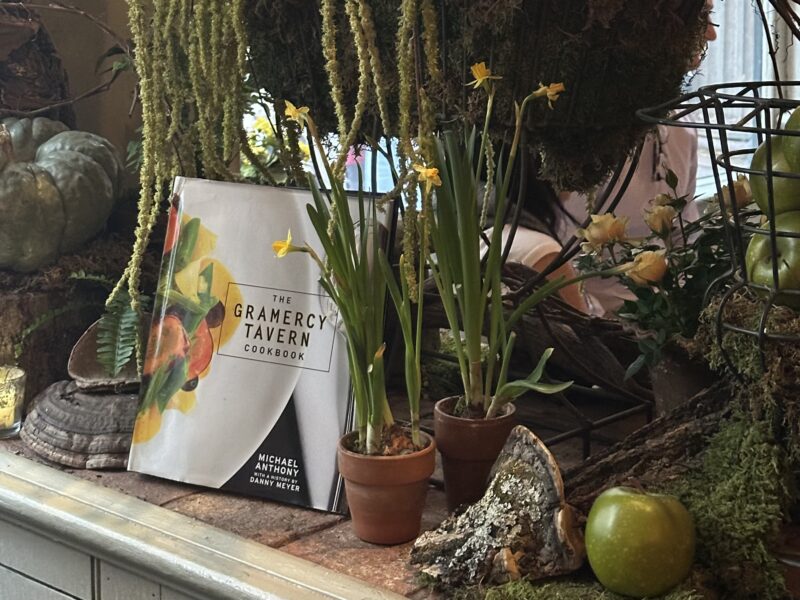Photo by Mahika Kukday | The Crow’s Nest
By Mahika Kukday
The University of South Florida’s Florida Studies Program hosted a sold-out event to celebrate Hispanic Heritage Month on Sept. 19. In collaboration with the Tampa Bay History Center, the luncheon brought people together to learn about the history surrounding the famed Cuban sandwich.
“A Taste of Florida” was hosted at the History Center’s TECO Hall, centered around a panel talk with the authors of The Cuban Sandwich: A History In Layers. A formal lunch was catered and served by the Columbia Restaurant team, who are beloved in Tampa and have been serving authentic Spanish food across the state since 1905.
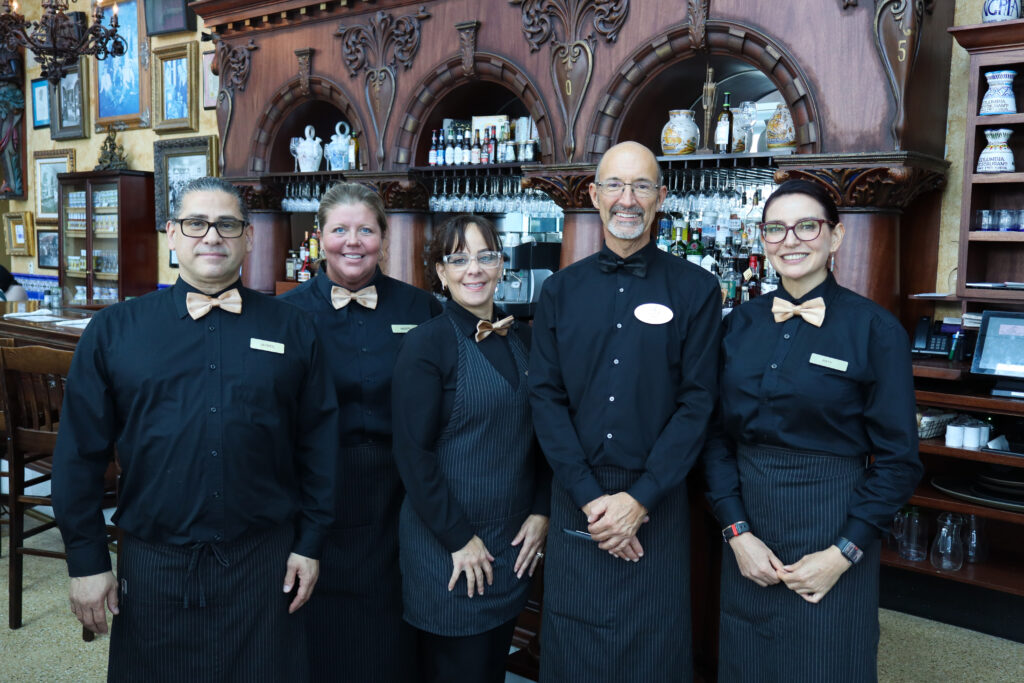
Photo by Mahika Kukday | The Crow’s Nest
“There’s something about the sandwich that’s approachable and satisfying,” said Jeff Houck, one of the book’s co-authors and the vice-president of marketing of the group that owns Columbia Restaurant (1905 Family of Restaurants). “It’s crispy, crunchy, salty, sweet, melty, pickle-y, mustardy. What other food do you have that’s like that?”
“If you’re from Miami, you can leave now,” he said, earning him an uproar of laughter.
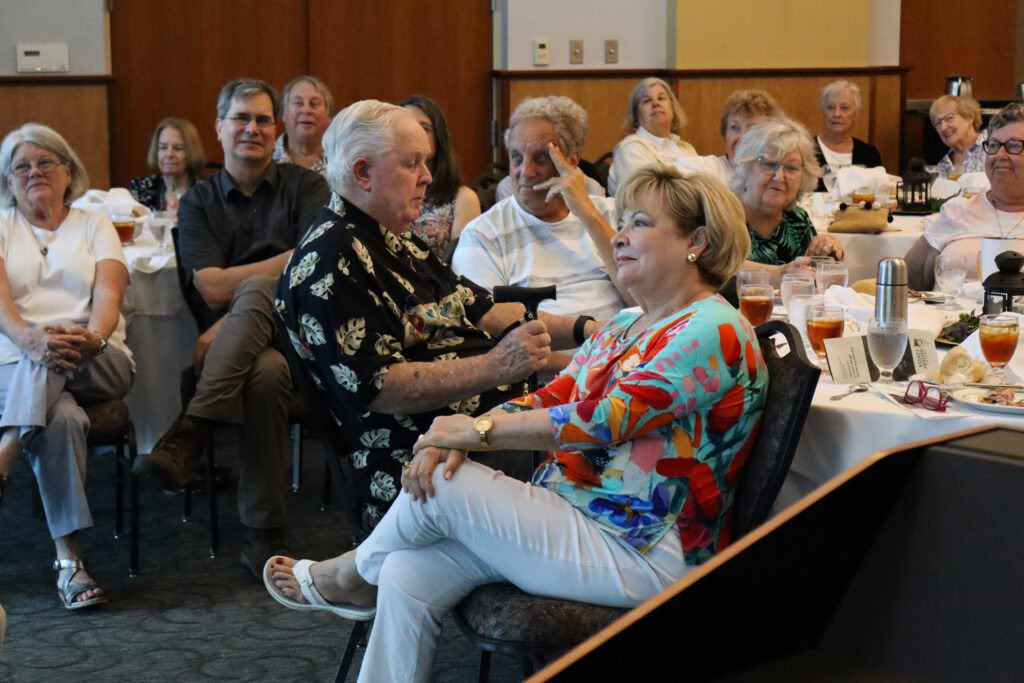
Photo by Mahika Kukday | The Crow’s Nest
Although he joked about the age-old Tampa v. Miami debate of who makes the better Cuban sandwich, Houck stressed that the dishes’ significance lies in the unique emotional connections that people formed when enjoying it.
The book’s two other co-authors, Dr. Barbara Cruz and Andrew Huse, are both USF faculty members. Cruz, who has been a professor of social science education since 1991, was moved by the memories that people attach to the Cubano.
“I have to tell you that this sandwich is very emotionally evocative,” she told The Crow’s Nest.
The experience of sharing a meal is often reliant on context, Cruz said. For her, grabbing a late-night Cubano and a café con leche with her sister transports her to their teen years.
“And that is the best Cuban sandwich in the world at that moment,” she said.
The sentiment rang true in all the interviews the team conducted for their book. As a native Spanish-speaker, Cruz talked to those who were bilingual or spoke only Spanish.
“The bilingual [interviews] were the most interesting,” she said. “They’ve [the interviewees] grown up in the U.S., mastered English, but when I would start to ask questions about their memories with the Cuban sandwich, often they switched to Spanish.”
Cruz mentioned that the research and interview process for the book took the authors to Tampa, Miami, New York, Ireland and even Korea.
She was born in Cuba, immigrated with her family to the U.S. in 1966 and was raised in Miami. In 1991, she moved to Tampa and began her ongoing career at USF.
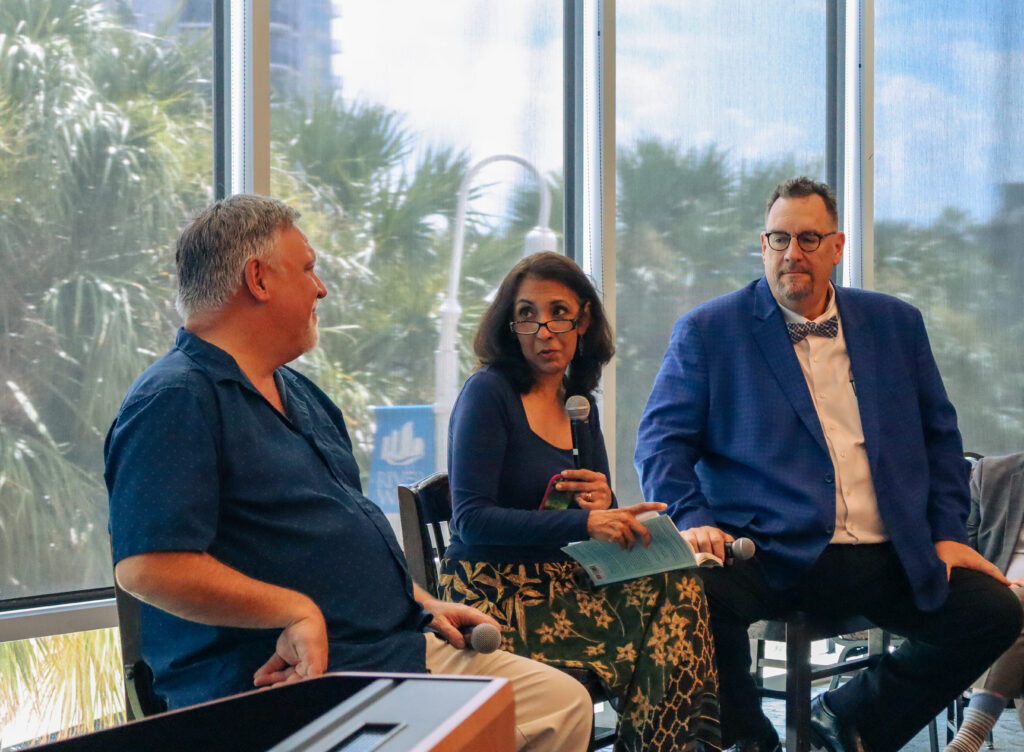
Photo by Mahika Kukday | The Crow’s Nest
Equally as well-versed in both food culture and research is Huse, also holding an impressive tenure of over 20 years at USF.
Huse is the cCurator of Florida Studies Special Collections at USF Libraries, and a longtime expert on the Cubano. In 2006, his article on the same gained national traction.
As an archivist and historian by training, his specialties include Florida and USF history. Food culture is another passion of his, and he has penned multiple books on the same.
At the event, he mentioned that he was frustrated with the previous discussion surrounding the sandwich and it was what led him to writing A History In Layers.
“I was getting tired of hearing this fight between two chambers of commerce, Tampa and Miami, who both wanted to lay claim to the sandwich,” he said. “Havana had been left out of the discussion altogether.”
Huse touched on the role of the Spanish-American war in the Cubano’s development and how sandwiches were having a global moment in the spotlight in the 1890s. Eventually, the Cuban sandwich as we know it today was created in Ybor City by Cuban, Spanish and Italian immigrants.
Towards the end of the event, the authors hosted a brief Q&A session. Afterwards, many audience members enjoyed the chance to mingle with the Cubano experts one-on-one, and to get their books signed.
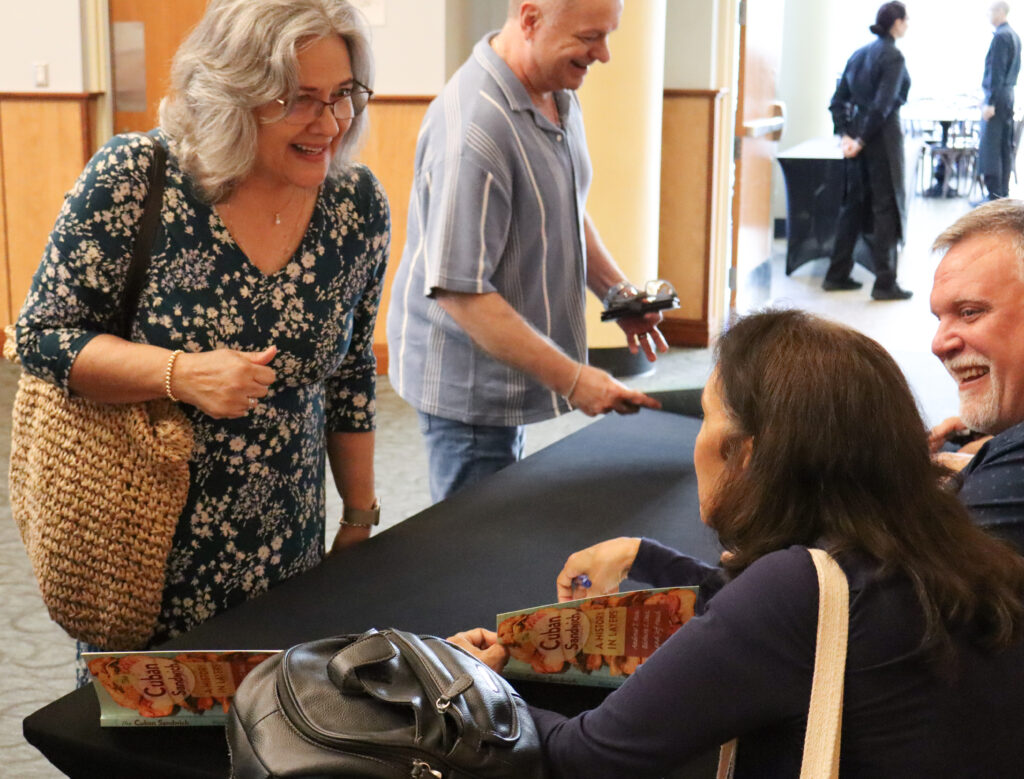
Photo by Mahika Kukday | The Crow’s Nest
Howard Rutherford, associate vice president of development for USF St. Petersburg university advancement, was one of the university faculty members in attendance. For him, the conversation brought up fond memories of his childhood.
“My mother was Cuban, and everything that [Cruz] described on a Saturday morning that she did with her dad, is what I did with my parents too,” Rutherford said. He enjoys cooking Cuban food and keeping family traditions alive.
According to DeeLynn Rivius, director of philanthropy at Westminster communities of Florida and one of the event organizers, the program was the first of a two-part collaboration between the USF Florida Studies Program and the Tampa Bay History Center.
The second instalment is coming in December 2024 and will focus on a different aspect of Floridian food culture. Event updates and information about the Florida Studies Program can be found on their website.



